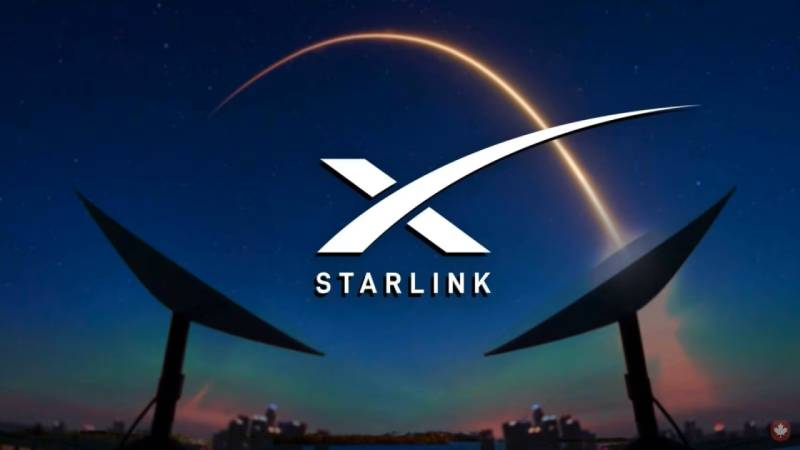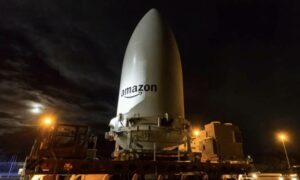After overcoming regulatory hurdles, Elon Musk’s satellite internet startup, Starlink, is expected to receive a licence to begin operations in India. It is expected that the services will help residents of isolated and remote regions.
After providing the Department for Promotion of Industry and Internal Trade with clarification regarding its shareholding pattern, Starlink is anticipated to gain approval from the Indian government this week. A letter of intent may subsequently be sent to Starlink by the Department of Telecommunications (DoT).
The department is getting ready to send a note to Minister of Communications Ashwani Vaishnaw and Telecom Secretary Neeraj Mittal for their approval. Musk’s company will receive approval from the department’s Satellite Communications Wing after they offer their nods.
In 2022, Starlink submitted a licence application for global mobile personal communication by satellite (GMPCS). With this, it will join Jio Satellite Communications and OneWeb as the third entity to hold this licence.
It will not, however, be able to begin offering the satellite-based broadband service right once thanks to the DoT’s approval. In order to establish earth stations, Starlink will also require authorization from the Indian National Space Promotion and Authorization Centre.
Starlink, OneWeb, and Jio’s satellite division will still need to wait for the DoT to assign them spectrum before they can begin providing the service, even after receiving all of these permissions. Project Kuiper, Amazon’s satellite division, is also applying for a GMPCS licence in India.
Previous problems in India
Due to their policy of taking pre-orders for its terminals at a minimal price, Starlink encountered difficulties with the Indian government in 2021. The company had intended to carry out trials for its satcom services in India, but those plans were shelved after the government ordered Starlink to reimburse the money it had been charged for operating in India without the required authorization.
Sanjay Bhargava, who oversaw Starlink’s activities in India, resigned as a result.
In 2022, Starlink also applied to the DoT to carry out trials using a big number of user terminals and gateway stations for a variety of goals, such as ecosystem development, product stabilisation, and technology and capabilities demonstration. The trials were not permitted, though.
Who in India will gain from Starlink’s services?
Satcom, or satellite communication, can deliver internet speeds up to 100 megabits per second (Mbps), which is comparable to 4G, but not 10 gigabits per second (Gbps), which is what 5G is capable of.
Most Starlink users report download speeds of more than 100 Mbps, with most users reporting speeds of between 25 and 220 Mbps. Its website states that upload speeds are normally in the range of 5 to 20 Mbps. Customers that live in rural locations where traditional internet infrastructure, such towers or optical fibre, isn’t available can benefit from this technology.
Comparing satellite communication to traditional terrestrial networks, one of the primary benefits is the speed and ease of installation and deployment.
According to Starlink, healthcare facilities and educational institutions might particularly benefit from satellite broadband connections. The business may first think about offering internet services directly to consumers, but it may also go into the business market. OneWeb is anticipated to give the B2B market additional attention.
The cost of Starlink services in India
It’s presently unknown how much Starlink’s service costs in India. Nevertheless, based on information provided by the previous head of the company’s Indian division, the initial cost might be approximately Rs 1,58,000. However, since Starlink’s equipment is a one-time purchase, the service charge would be Rs 1,15,000 starting in the second year, plus thirty percent tax. Base pricing for the user equipment is anticipated to be Rs 37,400, plus Rs 7,425 monthly for services. Though it is still in its infancy, satellite communication holds great promise, particularly for remote and rural areas of India. An EY-ISpA analysis projects that by 2025, India’s space economy will have grown to $13 billion, with a compound annual growth rate of 6%.
The global operations of Starlink
The primary means of delivering satellite internet services is through individual geostationary satellites, which orbit the planet at a distance of 35,786 km. But this causes a large latency, or round-trip data time, between the user and the satellite. Supporting high data rate activities like streaming, video calls, and online gaming is challenging due to this high latency.
More than 5,000 satellites are in operation for Starlink, which provides comparatively low latency internet transmission. The organisation takes pride in being the biggest and the pioneer in using low-Earth orbit satellite constellations to provide broadband internet that enables online gaming, video conferencing, streaming, and other comparable activities.
Thousands of satellites make up the Starlink constellation, which orbits the planet at a distance of roughly 550 km, covering the whole world. According to the company’s website, latency is significantly lower with Starlink satellites in a low orbit—roughly 25 ms as opposed to 600+ ms.
The only satellite provider that can launch its satellites whenever necessary is SpaceX. Starlink asserts that its satellites are continuously updated with the newest technology through frequent, cheap launches.
- How to Watch Stagecoach Festival 2025 Live on Amazon Music - April 8, 2025
- What Is the Masters Par 3 Contest? Format, Rules & How to Watch Live - April 8, 2025
- One UI 7 Officially Launches for Galaxy S24, Fold 6, Flip 6 Users - April 8, 2025





